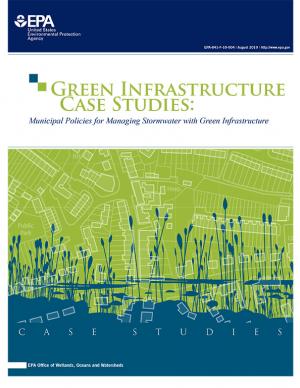Access a range of climate-related reports issued by government agencies and scientific organizations. Browse the reports listed below, or filter by scope, content, or focus in the boxes above. To expand your results, click the Clear Filters link.
This Guide is written for practitioners already using or wanting to use future climate information in their work, but who are not familiar with the underlying assumptions and choices surrounding climate data. Here, we introduce the climate model scenarios that are used to “drive” climate models forward in time. These scenarios are a combination of socioeconomic and climate forcing pathways. We summarize differences between these scenarios for the Great Lakes region to show users how their choice of model scenario affects future temperature and precipitation projections.
Green infrastructure can help to maximize the environmental, economic, and social benefits of parks. This guide from EPA encourages partnerships between park agencies and stormwater agencies to promote the use of green infrastructure on park lands to improve park lands and access to parks, better manage stormwater, increase community resiliency to shifting weather patterns, and provide funding to implement and maintain park enhancements that benefit the community. Using a stepwise approach for building relationships with potential partners, the guide includes information on how to identify and engage partners, build relationships, involve the community, leverage funding opportunities, and identify green infrastructure opportunities. It includes recommendations on the types of projects that are most likely to attract positive attention and funding and that provide a wide range of benefits. Included case studies from across the country illustrate approaches presented in the guide.
This report presents the common trends in how 12 local governments across the country developed and implemented stormwater policies to support green infrastructure. The local policies examined include interagency cooperation, enforcement and management issues, and integration with state and federal regulations. While a strong motivation for these policies and programs is innovation in stormwater management, many communities are moving past the era of single objective spending and investing in runoff reduction and stormwater management strategies that have multiple benefits. Green infrastructure approaches have a range of benefits for the social, environmental, and economic conditions of a community. Not only do these case studies include success stories for building a comprehensive green infrastructure program, but they also provide insight into the barriers and failures these communities experienced while trying to create a stormwater management system that includes more green infrastructure approaches.






